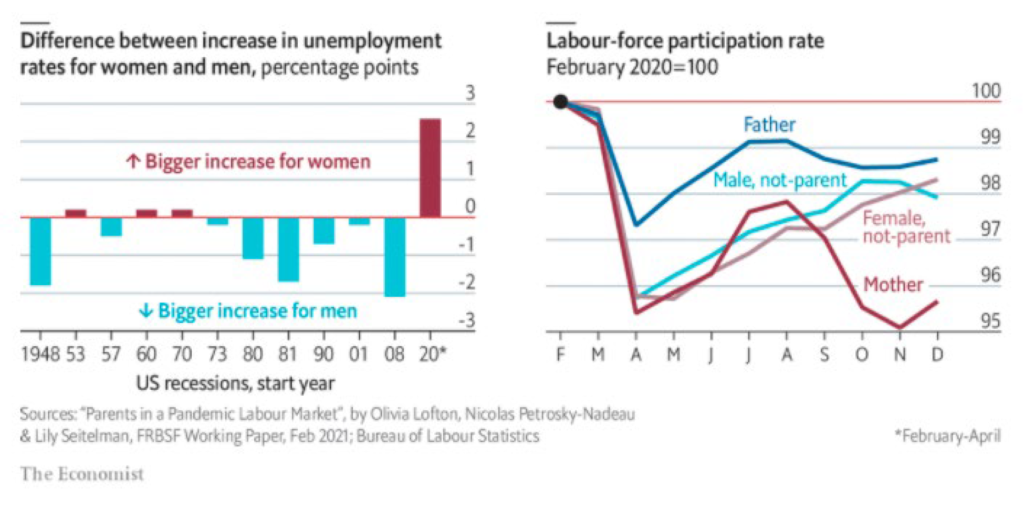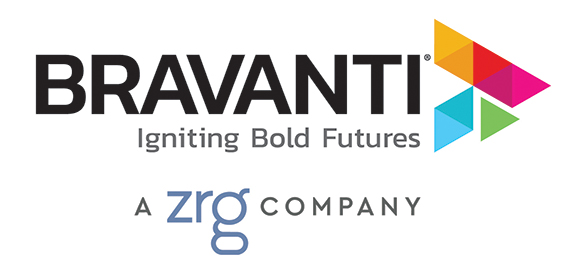Download the infographic “How Employers Can Empower Women Workers Every Day” here.
As we near the end of Women’s History Month, it’s important to reflect on how we carry this spirit forward into the workplace—not just during Women’s History Month, but every single day.
A Brief U.S. History of Women in the Workplace
Prior to the 20th century, women rarely worked outside of the home, but by 1930, just 10 years after the ratification of the 19th amendment, women workers constituted 20% of the U.S. workforce with nearly 50% participation among unmarried women and 12% among married women. While these women often worked in low-paying, transitional, and dangerous roles, the movement had momentum and traditional views on women in the workplace began to slowly evolve with it.
Throughout this period, policies were developed to protect women from poor working conditions, though these policies often resulted in restricting the rights of women in the workplace rather than protecting them. It wasn’t until the 1960s that legislation was passed to improve the economic status of women, including the Equal Pay Act of 1963, the Civil Rights Act of 1964, and a 1967 Presidential Executive Order from President Lyndon B. Johnson that prohibited gender-based discrimination in hiring by federal government contractors.
Throughout the latter half of the 20th century and into the 21st, a new paradigm emerged, one in which women were able and encouraged to participate in the workforce for a large portion of their lives. With this shift came growth in education, resources, and systems that enabled women to not just “get a job,” but to pursue a fulfilling career.
In December 2019, 100 years after the ratification of the 19th amendment, the female workforce had grown to hold more than half (50.04%) of all jobs in the US labor market (excluding farm workers and the self-employed). This isn’t to say that the challenges for women in the workplace were over—far from it—but it was a momentous accomplishment, nonetheless. This momentum, however, would be short-lived with the arrival of COVID-19 just four short months later.
Where We Stand Today
There is a growing fear that the pandemic could erase, or at least minimize, the gains made by women over the years as we experience our first female recession, or “shecession” as some economists are calling it. This is especially true in certain groups, namely women of color and working mothers.

Between February and December of 2020, the U.S. employment rate among working mothers dropped by 7% while the participation rate dropped by 4%, compared to that of working fathers, whose employment and participation rates dropped by 4% and 1%, respectively.
The challenges for women of color are even greater. In addition to loss of childcare and job security concerns, Black women are also twice as likely to attribute the death of a loved one as being one of their biggest challenges during the COVID-19 pandemic. And women of color are also struggling with incidents of racial violence and the social justice movement, creating a compounding effect of emotional and mental distress.
We don’t yet know how bad the loss of jobs, income, and promotions, as well as social inequity and emotional distress, among women will impact the economy, or how it will impact an entire generation of women, but suffice it to say that the outlook isn’t good. Which is exactly why we must do something today.
Why We Need Women in the Workplace
Laura D’Andrea Tyson, economics and business professor at the Hass School of Business (University of Berkeley), told a panel at the 2016 World Economic Forum that “the gender parity debate is wrongly focused on fairness. Women improve innovation and complex decision-making — we have failed to make the business case.”
And she’s absolutely right. Just take a look at some of the research that supports the business case:
- A 2020 BBC Business Report stated that “firms where at least one-third of the bosses are women have a profit margin more than 10 times greater than those without.” (BBC)
- A 2016 analysis by the Peterson Institute for International Economics and EY of 21,980 global, publicly traded companies – across 91 countries and various industries and sectors – showed that having at least 30% of women in leadership positions or the
C-suite adds 6% to net profit margin (PIIE) - A 2015 study by trading platform Quantopian analyzed the performance of Fortune 1000 companies with women CEOs between 2002 and 2014 against the S&P 500’s performance for the same period. The results showed that the 80 women CEOs produced equity returns 226% higher than the S&P 500. (Fortune)
- A 2016 Credit Suisse report showed that “investors focusing on those companies where gender diversity is an important factor in their strategy continue to be rewarded with excess returns running at a CAGR of 3.5 percent.” (Credit Suisse)
- The Journal of Organizational Behavior published a study showing that women-led teams were more collaborative, communicative and open to learning—even when managed across remote locations. (Journal of Organizational Behavior)
These numbers prove what we already know: businesses need women. And they need them in leadership positions. At BPI group, we’re fortunate to witness the power of women-led teams first-hand. The impact of women leaders is a simple matter of fact.
How Will Your Organization Empower its Women Workers?
According to a recent report by McKinsey & Company, one in four women are considering downshifting or leaving their careers altogether due to the impact of COVID-19. The sheer magnitude, and devastating impact if this occurs, cannot be overexaggerated.
Employers are at an impasse: Empower your women workers with the tools and resources needed to progress in their careers, or deal with the ramifications of this unprecedented shift, the degree of which is largely unknown.
So, what can employers do? We created the infographic below to help employers think beyond the basics to truly empower women in the workplace. What tactics is your organization using? What do you think should be added?
Learn more about Bravanti’s solutions for Women Leaders.
About the Author
Brenda is known for her expertise in building collaborative partnerships and developing teams to improve leader performance and drive results. She is an accredited coach working with leaders and managers in large and mid-size companies as well as non-profit organizations. Brenda has led engagements for the organization focused on women’s leadership and advancement, which include long programs, workshops, speaking engagements, and individual and group coaching. Her approach is practical, goal-focused, and action-oriented. Read Brenda’s bio.
Content Related to Women in the Workplace: Empowering Them Every Day
Infographic: How Employers can Empower Women Workers Every Day


